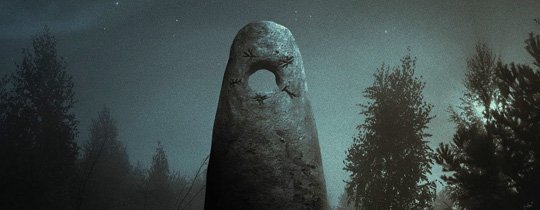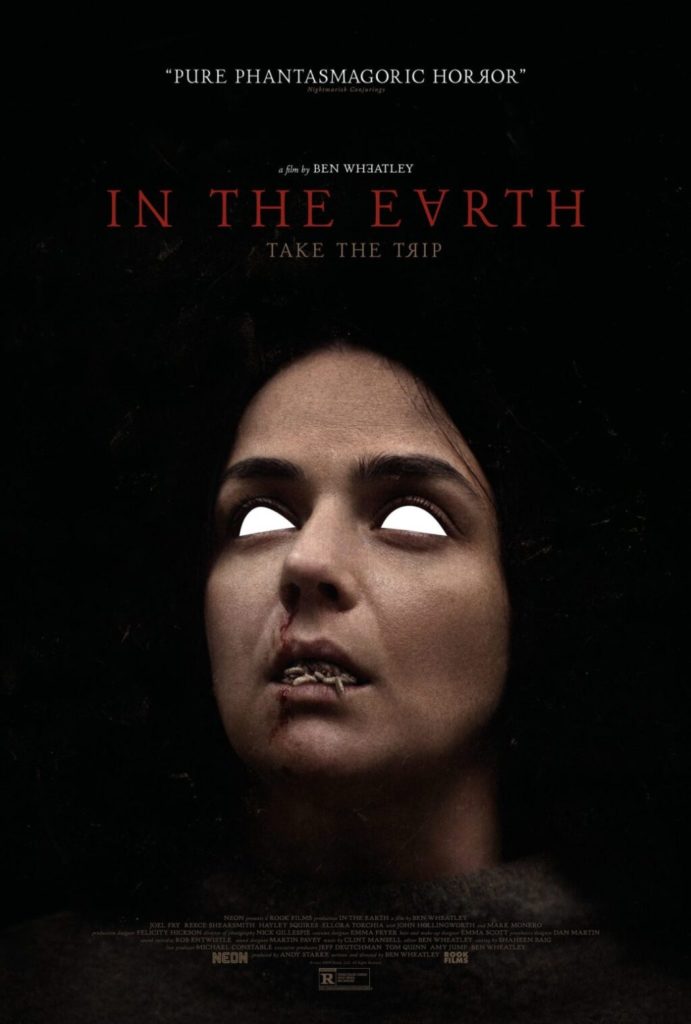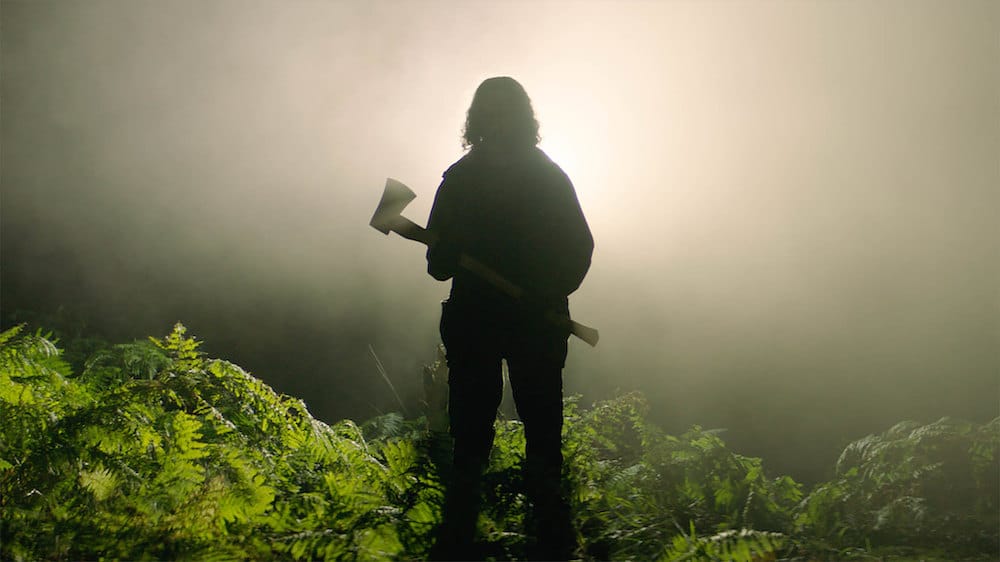
I go backwards and forwards on director Ben Wheatley’s work to date, but I can never resist the promise of one of his passions – folk horror: in that respect, the opening scenes of In The Earth certainly don’t disappoint, foregrounding the promise of ancient practices and beliefs – and things going wrong, at a wild guess – almost immediately. Beneath a looming monolith, an unseen hand makes and plants a shard of flint, covering it tenderly with grass. It’s not clear when this offering is taking place, but the next scene brings us up to date with something which looks rather achingly familiar at this point: Britain, during a pandemic and lockdown situation. Martin Lowery (Joel Fry) is arriving at a research facility, having himself had to undergo a lengthy isolation due to the illness. Whilst the pandemic itself doesn’t figure particularly in the film from this point onwards, it does provide us with an initial hit of an awful, recognisable now-normality, with a facility doing its best to stay open and functioning during extenuating circumstances. This makes what is now familiar look as ghastly as it is; nothing in the film is in a relaxed state, even before things really get going.
Martin is here to liaise with a former colleague, Dr Olivia Wendel (Hayley Squires), with whom he had been regularly corresponding. However, her current project has seen her isolating at a camp which is a long hike away from the lodge; to reach her, he needs the assistance of an experienced ranger, Alma (Ellora Torchia). After a brief stay, during which he discovers something of the local folklore about the ‘unusually fertile’ woodland, they proceed. They are both surprised to find another, abandoned camp way out there; there’s no sign of life, but clearly someone with children has stayed there recently, as there are toys left in the tent. A little perturbed, Martin and Alma move on and set up their own camp for that night.
Things from here begin to escalate; that evening, as they sleep, Martin and Alma are brutally attacked and robbed, leaving them both unconscious; Martin’s shoes are taken, a small and perplexing enough thing which – in this situation – is absolutely crippling, especially when he tears his foot on a rock, and all they can do is proceed, slowly and painfully, to Dr Wendel’s camp. But it seems that someone is watching them (in the first genuinely creepy scene, to balance against the film’s moments of intense physical, grisly nastiness). They meet a man by the name of Zach (Reece Shearsmith) who says that he, too, has been recently attacked; he offers the pair help, inviting them back to his camp. Is he as benevolent as he seems? Martin and Alma’s experience moves rapidly from bizarre to threatening, and in trying to unpick their situation, they necessarily need to understand the goals which unite both Zach and Dr Wendel.

At about the midpoint of In The Earth, it seemed uncertain which direction the plot was going to take – ordeal horror, or occult horror. Come to think of it, ‘ordeal occult’ isn’t a bad label to attach to this film; it definitely balances its unflinching physical horror against something far more esoteric. But things move in a series of unexpected directions from around an hour in, escalating, taking the tropes of sylvan horror and adding a tangle of intriguing lore. One of the film’s most ambitious aspects in how it treats religious/artistic veneration, the kinds of worship and ritual which have long been with us, considering this alongside a kind of quasi-science approach, with advocates for each. It’s in the final twenty minutes or so when the film tries to at least partly clarify all of this which seemed thinnest to me, but it does come accompanied by some very heady, eerie sequences, and it has sense enough to retain a good share of ambiguousness, rather than just scientifically find itself a series of answers. It would depart all too far from folk horror if it did.
All of the actors here do very well, enacting their rising confusion and panic successfully, though most praise must go to Shearsmith, doing an impressive turn here as a kind of affable maniac. But then, there’s method in his madness – or, at least something more cogent than Martin and Alma have, at the point when they first meet. Shearsmith also furnishes the film with a few moments of peculiarly black humour, interludes almost, which are quite discomfiting in their own right given everything else going on. I know it’s a long time since The League of Gentlemen did things on screen which they’d almost certainly not be able to do now, but it does seem that his abilities to meld threat with uncomfortable laughter were honed there. Zach also holds the entire plot together, giving some moments of exposition as well as sustaining the film’s creepier scenes, appearing whenever either of those things are needed.
Most of all with In The Earth, I liked the way it effectively establishes its weird microcosm in the woods, then aims to do so much with it: memories, ritual, worship and the notion of fate come together with bizarre, but intriguing attempts to overlay modern preoccupations like research, data and theory. Ideas begin to topple into one another at the end, but even at its busiest and gaudiest, it remains eerie and intoxicating. Clint Mansell’s overbearingly odd soundtrack and artist Richard Wells’ accompanying artworks all add to the spell.
In The Earth (2021) will be in theatres (US) on April 16th 2021.
